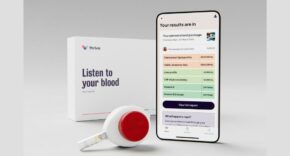
A topic that is certainly generating noise is that of the future of social care: a system that was already in crisis and further exacerbated by the unforeseen Coronavirus pandemic. Billions of pounds from the Government’s Coronavirus emergency response fund were pledged in April towards public services, including social care. Recently there was talk of taxing the over 40’s to fund later care, and then came the Government’s pledge of more than half a billion pounds to help people return home from hospital by funding immediate costs of care within their own home.
Without a doubt social care needs to undergo a rapid and long term transformation, but this can’t be achieved nor sustained by simply finding more capital to fund the same broken system. Helen Dempster, Founder, Karantis360, explores how investing in technology can provide a solid foundation for transforming the delivery of social care through a more joined up and holistic approach throughout the entire healthcare ecosystem.
Flawed Strategies
While increasing tax for the over 40s to help pay for social care has not been confirmed by the Government, it’s certainly provoking food for thought and mixed opinions among both politicians and the public. Rightly so; there is a general consensus that something drastic needs to happen to prevent the same crisis that we’ve seen unfold within care homes during the pandemic. The desperation among all generations, particularly those who are at the stage of planning for later life, to not endure the same shortcomings of care that have been witnessed recently, means that the idea of paying more tax to improve social care may not seem so bad after all.
But, look a little deeper and it’s clear to see that it’s illogical to increase tax for the over 40s to solve the social care problem. Those people are already fighting a long working week to pay the bills in an economic crisis. For most, higher taxes will mean working even longer and harder – is that not a vicious cycle to the deterioration of one’s own health and wellbeing? And secondly, taxing our people more money to plough back into a care model that has long proven its failings isn’t going to fix the system. All it will do is create hospital care homes which totally contradicts the most recent Government pledge of home care funding to enable early hospital discharge.
And while the Government’s pledge to help people return home from hospital by funding immediate costs of care in their own home may appear encouraging on the surface, the reality is that the nation is already suffering from a severe shortage of carers. How will the Government ensure the safety of those facing early discharge in an already over-stretched industry?
There is no doubt that being cared for in your own home is the safest and the preferred model of care for most individuals. But, the UK relies heavily on overseas carers, and with Coronavirus and Brexit restricting free movement of key workers, there appears to be very little strategy as to how the significant volume of essential carers and nurses will be found to deliver the level of care that is required – and promised.
Technology to support
However, if the Government uses the billions of pounds that it’s pledged for social care wisely, there is no need for the suggested tax scheme. Importantly, there is a solution to ensuring safe early hospital discharge; one that can support the existing care workforce; one that enables individuals to live independently for longer within their own home; and one that can empower clinicians and carers with the right information to provide the best possible level of care.
But, this means rethinking the entire model of care and investing in technology to underpin the social care sector. Adopting technology to monitor individuals’ health in their own homes not only provides a safeguarding solution, but also enables behavioural and biometric patterns to be learned. The solution can therefore identify problems such as Urinary Tract Infections (UTIs), for example, at the earliest onset to begin treatment immediately. Early identification and diagnosis minimises risk of an infection escalating to a critical point that requires a visit to A&E, and possible hospital admission – saving the NHS money and reducing bed blocking.
Furthermore, these types of technology systems can help to provide a more joined up approach between the clinical and social care setting. For example, biometric data can now be used in acute and continuous monitoring settings, meaning that typical vital sign checks that are usually performed by the GP can now be accessed remotely in real time. Both carer and clinician can have full access to an individual’s overall health, enabling accurate and informed care decisions to be made.
Crucially, technology has the ability to support and retain the precious carers that we do have. Society’s expectations of everyone in the care industry are overwhelming – and the impact on mental health is disturbing: 84% of carers feel stressed, 78% anxious and 55% report suffering from depression as a result of their caring role. For carers, it is the continual fear of the unknown that can create significant levels of stress. From visiting a client for the first time, to arriving at the door of a client with dementia and unpredictable mental and physical capabilities, to discovering a deceased client, even the frustration of traffic, parking and finding a new address, every day potentially raises a new set of stressful events. Add in the challenge of trying to cram administration and reporting into a 30 minute care visit, and the process becomes inherently unsatisfying – for both carer and client.
Using digital technology to reduce admin and increase client contact time is an obvious step to improve the experience for both parties. But that is just the start: the fundamental requirement is a way to better share information between carers and gain far more insight into a client’s wellbeing than can ever be achieved within a short visit. For carers, having a quick overview of each client’s recent activity on a mobile device before entering the house is incredibly powerful, especially when combined with notes – which can be spoken into the device – from the most recent care visits. For example, has the client had an episode over the past few days? Refused or been unable to get out of bed? If the system is being used to its full potential, not only will the carer have an up to date view of the client’s activity, but any abnormal behaviours will immediately create an alert for the care agency. Essentially, the carer is forewarned of any potential problem with a client – eradicating the uncertainty that is so devastating to mental health.
Technology alone cannot replace human care, but amidst the social care crisis and carer shortage, funding should be focused on supporting the carers and nurses on the front line that we do have, to ensure no individual is left with unmet care needs. It’s this type of technology that can provide a full, detailed and accurate overview of the individual, giving them the time and confidence to deliver optimum levels of care. Let’s remove the social care sticking plaster once and for all, and transform the way in which social care is delivered to all parties.












